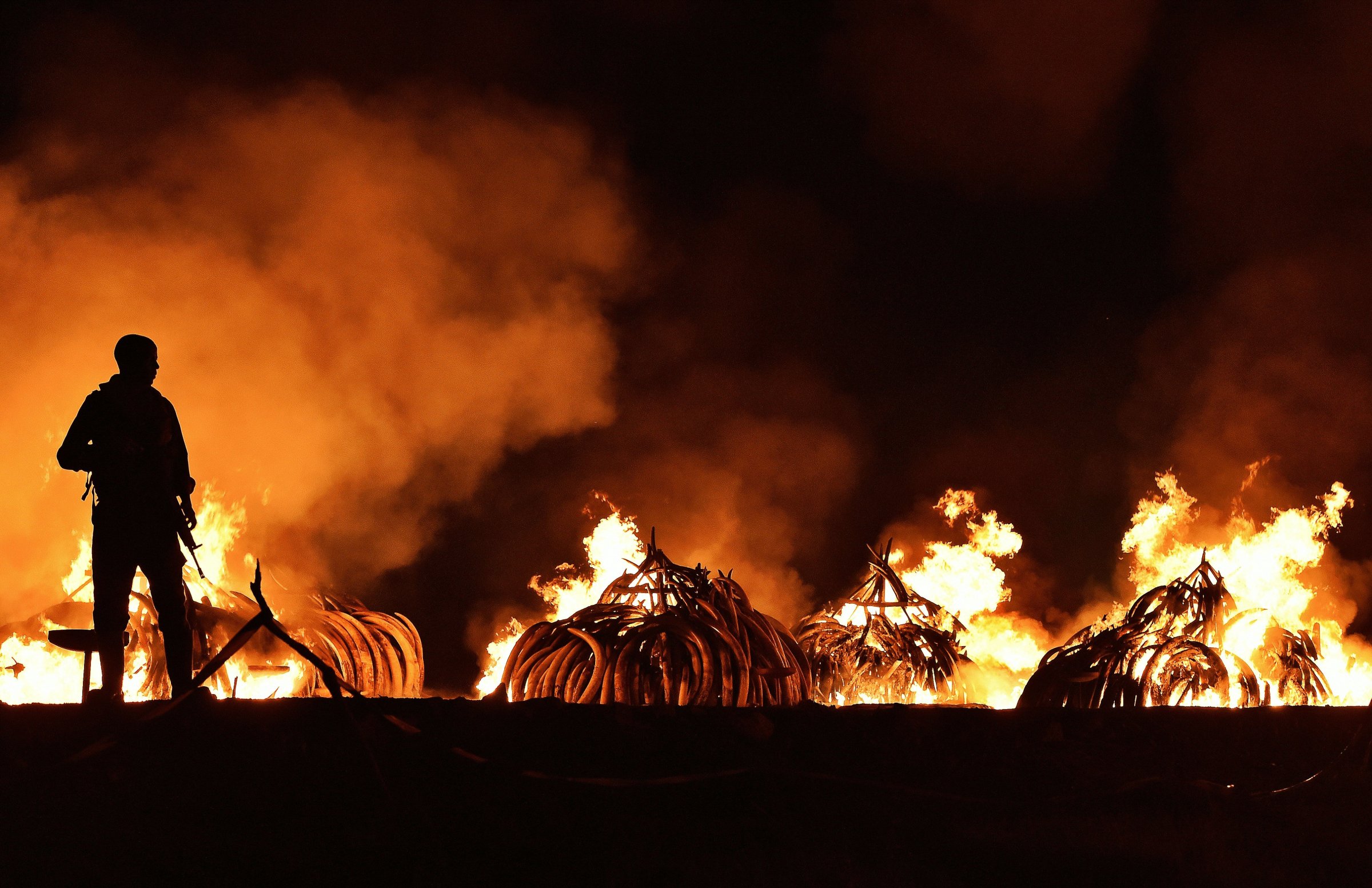
The illegal ivory trade has far more to do with violence than it has to do with pachyderms.
“For me, wildlife trafficking is not a wildlife story, it’s a crime story,” Bryan Christy, a fellow and chief correspondent at National Geographic, said at Fortune’s Brainstorm E conference on Tuesday about his exposé on the black market for elephant tusks.
Christy, whose story appeared in a National Geographic cover story last fall, tracked the movement of the animal good around Africa to reveal how its traffickers’ dealings finance terrorism in the country. He spoke about the origins of the investigation on stage during a panel titled “The Ivory Wars.”
“The first thing I did when I talked to my team was to stop talking about elephants and to start thinking about other forms of crime,” he told the audience in Carlsbad, Calif. “When you want to use the word ‘elephant,’ use the word ‘cocaine.’ If you use the word ‘cocaine’ when you’re talking about ivory, you’ll start to understand—you’ll start framing this in your mind the way I want you to.”
Two video clips from Christy’s documentary film, Warlords of Ivory, were played during the session. The first introduced how the team crafted a fake tusk with an embedded GPS tracker. The device allowed them to watch the movement of smugglers who thought it was real.
The second clip showed Christy on the ground in the Democratic Republic of Congo speaking with local rangers whose job is to protect a national park and its inhabitants. At one point, Christy points out a fragment of a human skull half-buried in the dirt, a casualty of the poaching trade.
After the clip ended, Christy revealed that one of the men he spoke to on screen was killed soon after the segment was filmed. Another five from the same group were killed later on, he said.
“I knew the organized crime side of it; I knew the business side of it; but I didn’t understand the violence,” Christy said about when he started his research. “This project was an effort to peel back—to pull back the curtain on the level of violence in central Africa.”
In an earlier feature story for National Geographic, Christy had followed the trade to black markets in China. In the latest investigation, he aimed to take a different approach, he said.
“I wanted to tell in this project the role that rangers are playing on the front lines to protect not just these animals—but they’re protecting the villagers,” he said.
“The stability, such that there is in central Africa, is often because of rangers like this,” he added. “They’re the only order that exists in these areas so, as a result, when terrorist groups or other occupiers are coming in, the first thing they want to do is take [them] out.”
Jennifer Reingold, senior editor at Fortune, led the discussion, which also featured Jean Case, who chairs the National Geographic Society. Case is also the CEO of the Case Foundation as well as the wife of Steve Case, co-founder and former CEO of AOL.
“Some people have said they count Bryan’s work as among the top 10 most important things thatNational Geographic has ever done to change the world,” Case said of the project.
“It’s not an animal issue,” Christy said. “One of the things we’re trying to do is use animal stories to tell bigger stories, social stories.”
More Must-Reads from TIME
- Donald Trump Is TIME's 2024 Person of the Year
- Why We Chose Trump as Person of the Year
- Is Intermittent Fasting Good or Bad for You?
- The 100 Must-Read Books of 2024
- The 20 Best Christmas TV Episodes
- Column: If Optimism Feels Ridiculous Now, Try Hope
- The Future of Climate Action Is Trade Policy
- Merle Bombardieri Is Helping People Make the Baby Decision
Contact us at letters@time.com